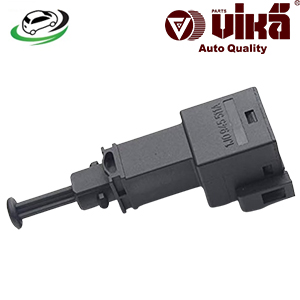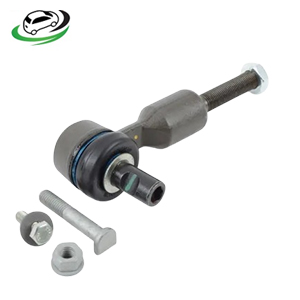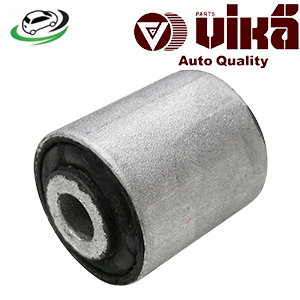-16%
Get Front Lower Outer Control Arm Bush Audi B5 A4-1.8T/V6 12v/V6 30v/10v /B5 S4/C5 A6/C5 S6/D2 A8/RS6 / VW Passat B5 4D0407181H
Control arm bushings are integral components in a vehicle’s suspension system, providing crucial support and flexibility to the control arms. They play a vital role in ensuring smooth handling, stability, and ride comfort. This guide delves into the function, design, common issues, maintenance, and replacement of control arm bushings.
1. Purpose and Function of Control Arm Bushings
Control arm bushings are rubber or polyurethane components that are used to mount the control arms of a vehicle’s suspension system to the chassis. They serve several important functions:
1.1. Absorbing Road Impacts
- Vibration Isolation: Control arm bushings absorb and dampen vibrations and impacts from the road. This helps to reduce the transfer of harsh road conditions and road noise to the vehicle’s cabin, enhancing ride comfort.
- Shock Absorption: They also help to absorb shocks and impacts from road irregularities, which reduces the stress on other suspension components and contributes to a smoother driving experience.
1.2. Allowing Controlled Movement
- Flexibility: The bushings allow for controlled movement of the control arms. This flexibility is essential for accommodating changes in wheel alignment during driving, such as when turning or navigating uneven surfaces.
- Alignment Maintenance: By allowing the control arms to pivot and flex, the bushings help maintain proper wheel alignment and handling characteristics, ensuring that the vehicle handles predictably and remains stable.
1.3. Reducing Noise and Vibration
- Noise Damping: The bushings help to reduce noise transmitted from the road and suspension components to the vehicle’s interior. This contributes to a quieter and more pleasant driving experience.
- Vibration Reduction: They also minimize vibrations caused by road irregularities, engine operation, and other sources, improving overall driving comfort.
2. Design and Structure of Control Arm Bushings
Control arm bushings are designed to withstand significant stress while providing the necessary flexibility and cushioning. They typically consist of the following components:
2.1. Types of Control Arm Bushings
- Rubber Bushings: Traditional control arm bushings are made from rubber, which provides a good balance of flexibility and durability. Rubber bushings are effective at absorbing vibrations and shocks but may wear out more quickly over time.
- Polyurethane Bushings: Polyurethane bushings are a more modern alternative to rubber. They offer greater durability, resistance to wear, and performance benefits. Polyurethane bushings are often used in performance applications due to their enhanced stiffness and handling characteristics.
2.2. Key Components
- Outer Sleeve: The outer sleeve of the bushing is typically made from metal and is designed to be mounted to the control arm or chassis. It provides a rigid structure for the bushing and ensures that it remains securely in place.
- Inner Sleeve: The inner sleeve is also usually made from metal and is designed to fit around the suspension components or mounting bolts. It provides a mounting point for the control arm and helps to distribute forces evenly.
- Bushing Material: The core material of the bushing is either rubber or polyurethane. This material provides the cushioning and flexibility required for proper suspension operation. It is often bonded to the inner and outer sleeves to ensure that it remains securely attached.
2.3. Mounting and Installation
- Mounting Points: Control arm bushings are typically mounted to the control arms and chassis using bolts or brackets. Proper alignment and secure mounting are essential for optimal performance and longevity.
- Installation: Installing control arm bushings involves removing the old bushings, positioning the new bushings, and securing them with the appropriate hardware. It is important to ensure that the bushings are properly aligned and that all fasteners are tightened to the manufacturer’s specifications.
3. Common Issues with Control Arm Bushings
Over time, control arm bushings can experience wear and deterioration due to exposure to road conditions, weather, and driving stress. Common issues include:
3.1. Wear and Degradation
- Cracking and Splitting: Rubber bushings can develop cracks or splits due to aging, exposure to extreme temperatures, and road debris. This can reduce their effectiveness and lead to increased noise and vibration.
- Polyurethane Wear: While polyurethane bushings are more durable, they can still experience wear over time. Hard impacts or excessive stress can cause the polyurethane material to degrade.
3.2. Noise and Vibration
- Clunking Sounds: Worn or damaged control arm bushings can produce clunking or banging noises when driving over bumps or during acceleration and braking. This noise indicates that the bushings are no longer effectively dampening impacts.
- Increased Vibration: If the bushings are worn, they may allow increased movement of the control arms, leading to increased vibrations felt through the steering wheel or vehicle chassis.
3.3. Handling Issues
- Steering Instability: Worn control arm bushings can affect the vehicle’s handling and steering response. This can lead to poor alignment, uneven tire wear, and a lack of stability during cornering.
- Inconsistent Ride Quality: As the bushings deteriorate, they may not provide the same level of cushioning and support, resulting in a harsher ride and decreased comfort.
4. Maintenance and Replacement
Regular maintenance and timely replacement of control arm bushings are essential for ensuring optimal performance and safety.
4.1. Inspection
- Visual Check: Regularly inspect the control arm bushings for signs of damage or wear. Look for cracks, splits, or excessive deformation of the bushing material. Check for any signs of grease or lubricant leakage, which may indicate a problem.
- Suspension Performance: Pay attention to the vehicle’s handling and ride quality. If you notice any unusual noises, vibrations, or handling issues, it may be a sign that the control arm bushings need to be inspected or replaced.
4.2. Replacement Procedure
- Removing Old Bushings: To replace control arm bushings, first, lift and support the vehicle safely. Remove the wheel and access the control arm assembly. Remove the bolts or fasteners securing the old bushings and control arm. Press or pry out the old bushings from their mounting points.
- Installing New Bushings: Position the new bushings in the control arm and chassis. Ensure that they are properly aligned and secured with the appropriate hardware. Reinstall the control arm and tighten all fasteners to the manufacturer’s specifications.
- Alignment: After replacing the bushings, it is essential to perform a wheel alignment to ensure that the suspension is properly adjusted and to prevent uneven tire wear.
4.3. Professional Service
- Consult a Mechanic: If you are unsure about the condition of the control arm bushings or if you encounter difficulties with replacement, it is advisable to consult a professional mechanic. They can perform a thorough inspection, diagnose any issues, and ensure that the bushings are properly installed and adjusted.
5. The Role of Control Arm Bushings in Vehicle Performance
Control arm bushings play a crucial role in the overall performance and safety of a vehicle. Their proper functioning is essential for:
5.1. Ride Comfort
- Smooth Driving Experience: Functional control arm bushings provide cushioning and reduce the impact of road irregularities, resulting in a smoother and more comfortable ride.
5.2. Handling and Stability
- Consistent Handling: Well-maintained bushings ensure that the control arms operate smoothly, maintaining proper wheel alignment and handling characteristics. This contributes to stable and predictable vehicle handling.
5.3. Safety
- Preventing Accidents: Properly functioning control arm bushings help prevent suspension and handling issues that could lead to accidents. They ensure that the vehicle remains stable and responsive, enhancing overall safety.
6. Advances in Control Arm Bushing Technology
Modern vehicles often incorporate advanced technologies and materials to improve the performance and durability of control arm bushings:
6.1. Enhanced Materials
- Advanced Rubber Compounds: Newer rubber compounds offer improved durability, resistance to environmental factors, and longer service life. These materials provide better performance and reliability.
- High-Performance Polyurethane: Upgraded polyurethane formulations offer enhanced stiffness and performance for high-performance and off-road applications.
6.2. Integrated Designs
- Hybrid Bushings: Some vehicles feature hybrid bushings that combine rubber and polyurethane elements to provide a balance of flexibility, durability, and performance.
6.3. Improved Manufacturing Techniques
- Precision Engineering: Advances in manufacturing techniques ensure that control arm bushings are produced with greater precision, consistency, and quality. This results in better performance and longer service life.
Follow us on Facebook for more parts.



